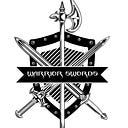Carolingian Sword: A Comprehensive Exploration
We begin by clearing up a common misconception. The Carolingian sword, prevalent during the Viking Age (8th-11th centuries), actually originated in the Frankish Empire (Francia). While Vikings acquired these prized weapons through trade or raids, the Carolingian Empire takes credit for its development.
Evolution of the Viking Sword (7th-11th Centuries):
The Carolingian sword emerged from its predecessor, the Merovingian sword. The 7th to 11th centuries witnessed significant advancements. Higher-quality steel led to a more balanced blade, adept at both thrusting and slashing. The Frankish Empire became the primary production hub, with workshops across Europe likely contributing as well.
Characteristics of the Carolingian Sword
This versatile weapon boasted unique features:
- Blade: Straight, double-edged, and typically 23–35 inches long, offering superior reach. Some blades, like the Ulfberht ones, even had inscriptions hinting at Frankish craftsmanship.
- Hilt: Varied in style, with the H-type being most common. This design featured a straight guard and a one-handed grip.
- Overall Functionality: The Carolingian sword excelled in both slashing and thrusting attacks, making it ideal for infantry and cavalry alike. Its balanced design allowed for swift, precise maneuvers.
Legacy of the Carolingian Sword
The Carolingian sword’s impact transcended its era:
- Evolution into the Knight’s Sword: It paved the way for later medieval swords, particularly those wielded by knights. Features like fullers and crossguards became more prominent, with the Carolingian sword’s strong, flexible design laying the groundwork for more ornate knightly swords.
- Symbol of Power and Status: Throughout history, swords signified power and prestige. The Carolingian sword was no exception, reflecting the owner’s strength and skill in battle. Owning a well-crafted sword wasn’t just about combat readiness; it was a symbol of wealth and importance.
- Archaeological Significance: Unearthing Carolingian swords sheds light on medieval warfare and sword-making techniques. These swords offer valuable insights into fighting styles, weaponry, and cultural values of the time. Finer details and inscriptions can even hint at artistic skills and belief systems.
Uses for the Carolingian Sword
This versatile weapon served various purposes:
- Warfare: Primarily used by infantry in battles for conquest, religion, or plunder. Notably, Vikings wielded it as infantry, while in Francia, mounted units and nobility also employed it.
- Status Symbol & Ceremonial: Owning a Carolingian sword signified high status. Its rarity and high cost (around $1200-$1500 in today’s money) made it a prized possession reserved for high-ranking nobles and royalty.
- Trade: The Carolingian and Frankish Empires thrived on the trade of these swords. Following the fall of the Western Roman Empire, trade flourished, leading to the widespread presence of Carolingian swords across Europe and beyond.
Modern Day Appeal
The Carolingian sword’s legacy continues to resonate:
- Medieval Reenactments & LARP: A popular choice for those portraying Vikings in historical reenactments and live-action role-playing games (LARP).
- Media Portrayal: Frequently featured in historical films, documentaries, anime, and video games like Assassin’s Creed.
- Beginner-Friendly: Due to its lightweight design and ease of use, the Carolingian sword is a great option for beginners interested in learning medieval swordsmanship.
Conclusion
The Carolingian sword, though often misattributed to the Vikings, played a pivotal role in shaping medieval warfare. Its enduring legacy lies in its influence on later sword designs, its symbolism of power, and its enduring popularity in historical and fictional contexts.
